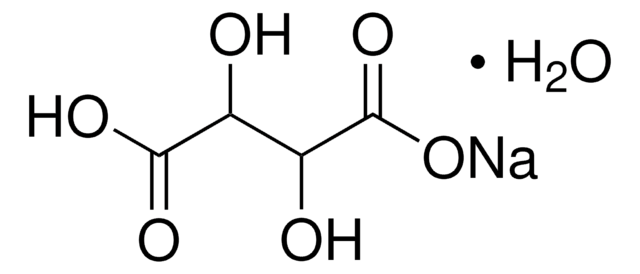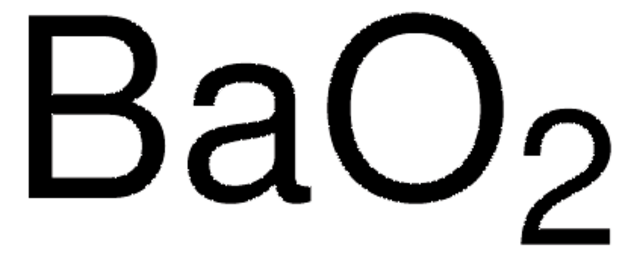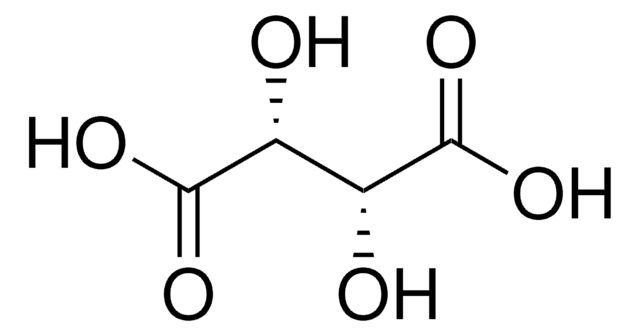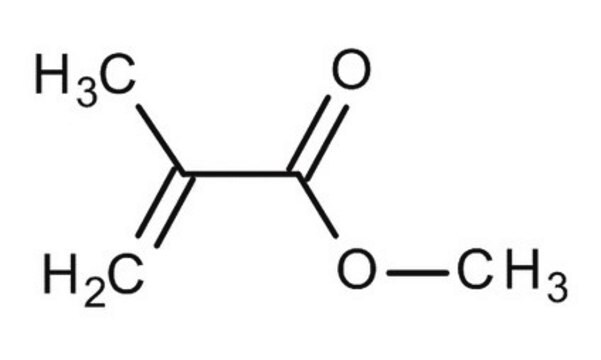All Photos(1)
About This Item
Linear Formula:
NH4ClO4
CAS Number:
Molecular Weight:
117.49
EC Number:
MDL number:
UNSPSC Code:
12352300
PubChem Substance ID:
NACRES:
NA.21
Recommended Products
Quality Level
assay
99.5% trace metals basis
form
powder
reaction suitability
reagent type: oxidant
density
1.95 g/mL at 25 °C (lit.)
SMILES string
N.OCl(=O)(=O)=O
InChI
1S/ClHO4.H3N/c2-1(3,4)5;/h(H,2,3,4,5);1H3
InChI key
HHEFNVCDPLQQTP-UHFFFAOYSA-N
Looking for similar products? Visit Product Comparison Guide
General description
Ammonium perchlorate is widely used as an oxidizing agent. The orthorhombic crystals of NH4ClO4 converts to cubic crystal system at temperatures higher than 240°C. CuO nanorods promotes the thermal degradation of ammonium perchlorate.
Application
Ammonium perchlorate (NH4ClO4) may be employed for the purification of as-made “pure” mesoporous silicas via oxidation.
signalword
Danger
hcodes
Hazard Classifications
Eye Irrit. 2 - Ox. Sol. 1 - STOT RE 2
Storage Class
5.1A - Strongly oxidizing hazardous materials
wgk_germany
WGK 1
flash_point_f
Not applicable
flash_point_c
Not applicable
ppe
Eyeshields, Gloves, type P3 (EN 143) respirator cartridges
Choose from one of the most recent versions:
Already Own This Product?
Find documentation for the products that you have recently purchased in the Document Library.
Mesoporous silicas prepared by ammonium perchlorate oxidation and theirs application in the selective adsorption of high explosives
Yang R, et al.
Microporous and Mesoporous Materials : The Official Journal of the International Zeolite Association, 168, 46-50 (2013)
Synthesis of CuO nanorods and their catalytic activity in the thermal decomposition of ammonium perchlorate
Chen L, et al.
J. Alloy Compounds, 464(1), 532-536 (2008)
Wei Zhu et al.
Journal of hazardous materials, 167(1-3), 810-816 (2009-02-24)
An all-atom force field for ammonium perchlorate (AP) is developed with the framework of pcff force field. The structural parameters of AP obtained with the modified force field are in good agreement with experimental values. Molecular dynamics (MD) simulations have
Eva D McLanahan et al.
Toxicological sciences : an official journal of the Society of Toxicology, 97(2), 308-317 (2007-03-24)
The objective of this research was to characterize the disturbances in the hypothalamic-pituitary-thyroid (HPT) axis resulting from exposure to a binary mixture, 3,3',4,4',5-pentachlorobiphenyl (PCB126) and perchlorate (ClO(4)(-)), known to cause hypothyroidism by different modes of action. Two studies were conducted
R S Damse et al.
Journal of hazardous materials, 154(1-3), 888-892 (2008-01-22)
This paper explores the possibility of increasing the ballistic performance of gun propellant with the addition of inorganic additives viz. aluminium and ammonium perchlorate. Compositions based on propellant NQ containing additional aluminium and ammonium perchlorate in different parts were studied
Our team of scientists has experience in all areas of research including Life Science, Material Science, Chemical Synthesis, Chromatography, Analytical and many others.
Contact Technical Service









